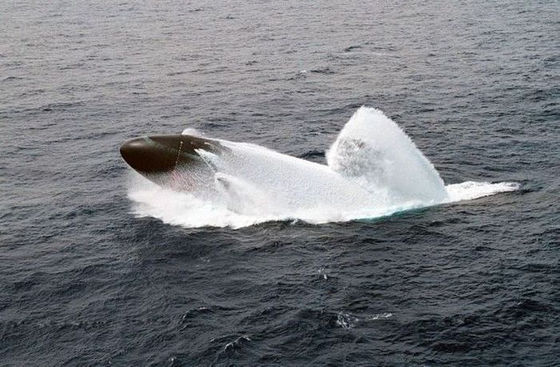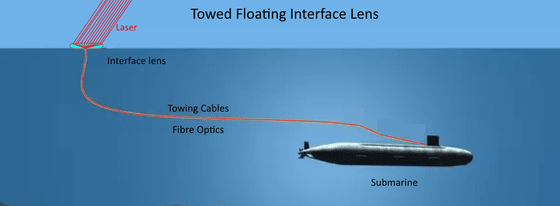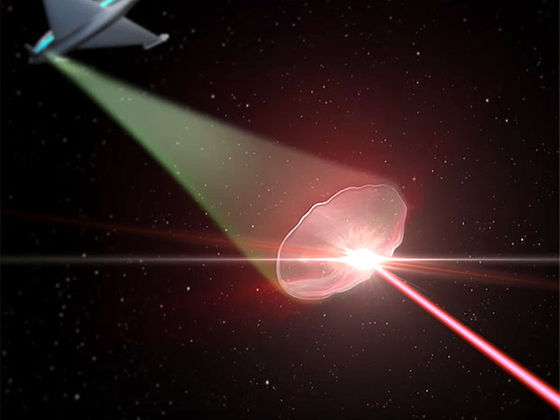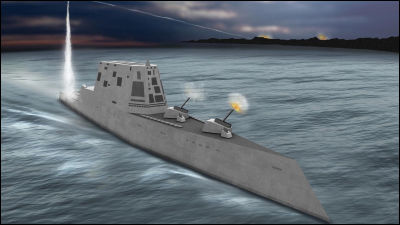If an alien attack fleet were to appear in Earth's orbit, the ultimate weapon would be a 'nuclear submarine equipped with a laser'

Stories like the movie '
ToughSF: Anti-Orbit Laser Submarines
https://toughsf.blogspot.com/2017/10/anti-orbit-laser-submarines.html
If an invader with the technology to freely navigate between planets were to visit Earth, there would be no space force in the world that could counter the invader with modern science, and air superiority would be easily seized. As a result, enemy warships would be able to freely navigate Earth orbit, and would be able to freely replenish themselves even if they ran out of fuel and supplies.

When launching a missile from space to Earth, like the '
To counter this, it is necessary to launch missiles from Earth. However, large missiles such as intercontinental ballistic missiles (ICBMs) have a high risk of being intercepted, and small, durable nuclear rockets require very high power requirements to gain sufficient acceleration, making the launch cost per shot very high.
Furthermore, from the high visibility of outer space, missile launch pads on Earth are easy to find and can be easily destroyed. Therefore, in order to intercept foreign enemies, strategic weapons that are small-scale and can withstand foreign attacks while also being able to attack in a short span of time and at low cost are required.
Beam cited 'laser-equipped nuclear submarines' as an option that could meet this requirement. Submerged submarines would be able to protect themselves from high-speed projectiles and lasers from space, and would be highly power efficient enough to not surface for months, allowing the submarine to continue operating even after a major land attack had devastated the surface.

According to Beam, nuclear submarines that can use seawater to cool their reactor cores could use the excess electricity to power a laser generator, but this tactic presents many technical challenges. When attacking targets in space from a submarine, the laser loses energy as it passes through multiple media: underwater, on the surface, and in the atmosphere.
In addition, the ocean surface is not flat and is constantly changing due to waves, tides, etc. As a result, laser light refracts and reflects as it passes through the ocean surface, bending the light beam and scattering it in unpredictable directions, making it difficult to accurately aim a laser attack from underwater.

In addition, because targets in space are so far away from the submarine, advanced optics would be required to focus the laser beam to a destructive intensity. Also, if the submarine's position is revealed when the laser is fired, it would be at higher risk of being attacked by an enemy. It has also been pointed out that depending on the wavelength of the laser used, it may not be able to effectively interact with the material of the spacecraft and may not cause sufficient damage.

To address these technical challenges, Beam has proposed solutions such as emitting a 400nm laser from a shallow depth, which has relatively high water and air permeability, to reduce energy loss, using a long wavelength of about 1m to significantly reduce the effect of distortion at the water-air interface, and installing a 'floating optical array' to correct distortion when the laser light moves from underwater to air. However, these solutions also have problems such as the need to install very large antennas on the submarine, making them useless when attacked by the enemy, and metals being difficult to destroy.

Beam has proposed a method called an 'optical phased array floater,' in which a dedicated platform hidden underwater would surface for a short period of time and fire a laser, and a method called a 'super-cavitated platform,' in which a submarine equipped with a powerful nuclear reactor would travel underwater at supersonic speeds, surface in an instant to fire a laser, and then immediately submerge.
Beam also argued that other advanced technologies such as

Related Posts:
in Science, Posted by log1r_ut







